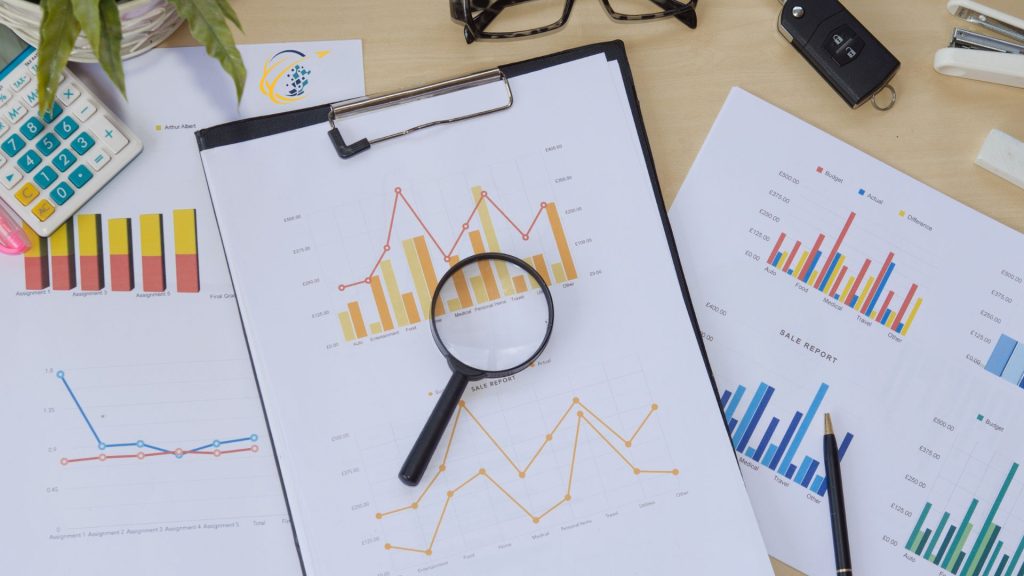In today’s dynamic business environment, staying ahead requires constant vigilance and adaptation. Assessing industry trends as well as competition is crucial for maintaining a competitive edge and also ensuring long-term success. Let’s go over methodologies, benefits, and best practices for assessing industry trends and competition, emphasizing the significance of these activities in strategic planning and decision-making.
Understanding Industry Trends
Industry trends are patterns or shifts in the market that indicate the direction in which an industry is moving. These trends can emerge from changes in consumer behavior, technological advancements, regulatory developments, or economic shifts. Assessing industry trends involves analyzing these patterns to anticipate future market conditions as well as identify opportunities for innovation and growth.
Businesses must stay informed about industry trends to remain competitive and relevant. By understanding the forces driving change in their industry, companies can proactively adapt their strategies and offerings. This proactive approach helps businesses capitalize on emerging opportunities as well as mitigate potential threats, ensuring sustained growth and profitability.
Methods for Assessing Industry Trends
There are various methods for assessing industry trends, each providing unique insights into market dynamics. Market research is a fundamental tool, involving the systematic collection and analysis of data related to the industry. Surveys, interviews, and also focus groups can gather direct feedback from consumers and industry experts. Secondary research, including industry reports, market studies, and academic publications, offers valuable information on broader trends and patterns.
Another effective method is trend analysis, which involves examining historical data to identify long-term patterns and changes. This approach helps businesses understand how their industry has evolved and anticipate future developments. Businesses can also leverage technology, such as data analytics and artificial intelligence, to analyze large datasets and uncover hidden trends. Social media monitoring is another valuable tool, providing real-time insights into consumer sentiments and emerging trends.
The Role of Competitive Analysis
While assessing industry trends is essential, understanding the competitive landscape is equally important. Competitive analysis involves evaluating the strengths, weaknesses, strategies, and market positions of current and potential competitors. This process helps businesses identify their unique selling points, differentiate their offerings, and also develop effective strategies to outperform their rivals.
Competitive analysis provides a comprehensive understanding of the competitive forces shaping the industry. By analyzing competitors’ products, pricing strategies, marketing efforts, and customer feedback, businesses can identify gaps and opportunities in the market. This information is crucial for developing strategies that leverage the company’s strengths and address market needs more effectively than competitors.
Methods for Conducting Competitive Analysis
There are several methods for conducting competitive analysis. SWOT analysis (Strengths, Weaknesses, Opportunities, Threats) is a widely used tool that helps businesses assess their internal capabilities and external environment. By identifying their strengths and weaknesses, companies can develop strategies that leverage their advantages and address their vulnerabilities. Analyzing opportunities and threats helps businesses anticipate market changes and respond proactively.
Benchmarking is another valuable method, involving comparing the company’s performance with industry standards or leading competitors. This process helps businesses identify best practices, set performance goals, and measure progress. Competitive intelligence is also crucial, involving the systematic collection and analysis of information about competitors. This can include monitoring competitors’ websites, press releases, financial reports, and social media activities.
Benefits of Assessing Industry Trends and Competition
Assessing industry trends and competition offers numerous benefits for businesses. One of the primary advantages is the ability to make informed strategic decisions. By understanding market dynamics and competitive forces, businesses can develop strategies that align with industry trends and capitalize on emerging opportunities. This information is essential for setting realistic goals, allocating resources effectively, and prioritizing initiatives.
Another significant benefit is improved innovation and product development. Assessing industry trends helps businesses identify unmet needs and emerging demands, guiding the development of new products and services. Competitive analysis provides insights into competitors’ offerings, highlighting gaps and opportunities for differentiation. By combining these insights, businesses can develop innovative solutions that meet market needs and stand out from the competition.
Assessing industry trends and competition also helps businesses mitigate risks. By staying informed about market changes and competitive activities, companies can anticipate potential threats and develop contingency plans. This proactive approach helps businesses navigate uncertainties and maintain stability in a rapidly changing environment.
Best Practices for Assessing Industry Trends and Competition
To maximize the effectiveness of assessing industry trends and competition, businesses should follow best practices that ensure accurate and actionable insights. One key best practice is maintaining a continuous assessment process. Industry trends and competitive landscapes are constantly evolving, so businesses must regularly update their research and analysis. This ongoing process helps businesses stay informed and responsive to market changes.
Another best practice is leveraging multiple sources of information. Relying on a single source can lead to biased or incomplete insights. By combining data from various sources, such as market research, industry reports, social media, and competitive intelligence, businesses can develop a comprehensive understanding of the market. This holistic approach ensures that insights are accurate and reliable.
Collaboration is also crucial for effective assessment. Involving cross-functional teams in the assessment process provides diverse perspectives and expertise. Marketing, sales, product development, and customer service teams can all contribute valuable insights into market trends and competitive activities. This collaborative approach enhances the quality of the analysis and ensures that strategies are well-rounded and informed.
Leveraging Technology in Assessment
Advancements in technology have significantly enhanced the process of assessing industry trends and competition. Data analytics platforms, artificial intelligence, and machine learning algorithms have made it easier to analyze large datasets and identify patterns. These technologies enable businesses to process and interpret data more efficiently, providing real-time insights into market dynamics.
Social media analytics tools are particularly valuable, offering real-time insights into consumer sentiments, emerging trends, and competitor activities. By monitoring social media platforms, businesses can gauge public perception, track competitors’ campaigns, and identify trending topics. This information is crucial for staying ahead of market changes and developing timely strategies.
Big data analytics is another technological advancement that enhances assessment. By analyzing vast amounts of data from various sources, businesses can uncover hidden patterns and trends that provide valuable insights into market dynamics. Artificial intelligence and machine learning algorithms further enhance data analysis, enabling businesses to make predictions and identify opportunities with greater accuracy.
Integrating Insights into Business Strategy
Assessing industry trends and competition should be an integral part of a business’s strategic planning process. By incorporating insights into their business strategy, companies can make data-driven decisions that align with market demands and competitive forces. This involves continuously monitoring the market and updating the assessment to stay informed about changing trends and competitive activities.
Businesses should also use insights to evaluate the effectiveness of their marketing campaigns, product offerings, and overall strategy. By measuring key performance indicators, such as market share, customer satisfaction, and competitive positioning, businesses can assess the impact of their strategies and make necessary adjustments. This iterative process ensures that the business remains agile and responsive to market changes.
Assessing industry trends and competition is a vital process that provides businesses with the insights needed to succeed in a competitive market. By understanding market dynamics, identifying trends, and evaluating competitors, businesses can develop effective strategies that drive growth and innovation. Employing best practices and leveraging technological advancements further enhances the effectiveness of the assessment.
In conclusion, businesses that prioritize assessing industry trends and competition are better positioned to recognize opportunities, mitigate risks, and achieve sustained success. By continuously gathering and analyzing market data, companies can stay ahead of the competition and deliver products and services that meet evolving customer demands. Assessing industry trends and competition is not a one-time effort but an ongoing process that is essential for long-term business success.


